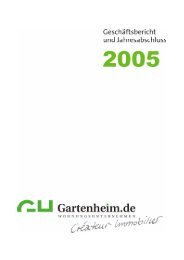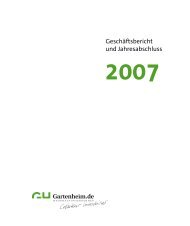analysis of the influences of solar radiation and façade glazing ...
analysis of the influences of solar radiation and façade glazing ...
analysis of the influences of solar radiation and façade glazing ...
You also want an ePaper? Increase the reach of your titles
YUMPU automatically turns print PDFs into web optimized ePapers that Google loves.
1.2 Background <strong>and</strong> literature review 21<br />
winter conditions, <strong>the</strong> <strong>solar</strong> <strong>radiation</strong> through <strong>the</strong> tested windows was identical to <strong>the</strong><br />
st<strong>and</strong>ard window.<br />
Fissore <strong>and</strong> Fonseca (Fissore, et al., 2007) investigated <strong>the</strong> <strong>the</strong>rmal behavior <strong>of</strong> an enclosed<br />
space with fenestration for temperate winter climates. Experiments were carried out for<br />
heating season conditions <strong>and</strong> during summer periods. An uncertainly <strong>analysis</strong> indicated<br />
that <strong>the</strong> most significant errors are generated from measurements <strong>of</strong> surfaces <strong>and</strong> air<br />
temperature. Errors connected with <strong>the</strong>rmocouples <strong>and</strong> voltage measurement can be<br />
significant. The same authors (Fissore, et al., 2007) analyzed <strong>the</strong> <strong>the</strong>rmal balance <strong>of</strong> a<br />
window in an <strong>of</strong>fice in climate conditions typical for Concepcion (Chile). One-year<br />
measurements <strong>of</strong> ambient <strong>and</strong> indoor parameters under simulation <strong>of</strong> various operation<br />
conditions showed that heat consumption for uncovered windows during clear winter days<br />
could be smaller about 50 % compared to a cloudy period. For autumn conditions, this<br />
value was reduced to 26.6 %.<br />
The Task 34/Annex 43 project <strong>of</strong> <strong>the</strong> International Energy Agency (IEA) included six<br />
experiments in an outdoor test cell in order to provide <strong>the</strong> necessary data for <strong>the</strong> validation<br />
<strong>of</strong> building energy simulation models <strong>and</strong> computer s<strong>of</strong>tware (Manza, et al., 2006). The<br />
experimental facility was assembled with two identical cuboid shape test cells with<br />
removable <strong>façade</strong> elements. An air-water heat exchanger was used to control <strong>the</strong> air<br />
temperature inside guarded zones. DOE-2.1E, EnergyPlus, ESP-r <strong>and</strong> HELIOS building<br />
energy simulation computer programs were used for modelling <strong>the</strong> <strong>the</strong>rmal behavior <strong>of</strong> <strong>the</strong><br />
tested spaces. Experimental data, which are available on <strong>the</strong> Internet from<br />
www.empa.ch/ieatask34, can be a good base to investigate <strong>solar</strong> gains through transparent<br />
elements <strong>and</strong> can also be used to validate existing s<strong>of</strong>tware for <strong>the</strong> energy <strong>analysis</strong> <strong>of</strong><br />
buildings.<br />
The beam <strong>solar</strong> <strong>radiation</strong> incident on building fenestration can be controlled with<br />
holographic optical elements. This system was tested by James <strong>and</strong> Bahaj (James, et al.,<br />
2005) in modern, highly glazed <strong>of</strong>fice extensions with a low <strong>the</strong>rmal mass at Southampton<br />
University (UK). The possible solutions <strong>of</strong> <strong>the</strong> <strong>solar</strong> control problem were tested based on<br />
<strong>the</strong> transient <strong>the</strong>rmal simulation <strong>of</strong> <strong>the</strong> building structure with help <strong>of</strong> <strong>the</strong> computer code<br />
TRNSYS. The authors assumed that <strong>the</strong> HOE systems function at a 100 % diffraction<br />
efficiency but required alignment between incident direct <strong>radiation</strong> <strong>and</strong> <strong>the</strong> angle <strong>of</strong> <strong>the</strong><br />
hologram. Moreover, <strong>the</strong> effects <strong>of</strong> glare <strong>and</strong> spectral dispersion may cause <strong>the</strong> unsuitable<br />
functioning <strong>of</strong> holographic elements.<br />
Coating with a spectrally selective layer on external walls can affect heat transfer. Prager<br />
<strong>and</strong> co-workers (Prager, et al., 2006) analyzed <strong>the</strong> influence <strong>of</strong> <strong>solar</strong> <strong>radiation</strong> <strong>and</strong><br />
convection on <strong>the</strong> energy balance <strong>of</strong> a building based on test facilities in Freiburg<br />
(Germany). It was found that <strong>the</strong> considered IR radiative component reduces <strong>the</strong> heat<br />
dem<strong>and</strong> to between 5 % <strong>and</strong> 15 % during <strong>the</strong> winter season. However, in summer time, <strong>the</strong>





